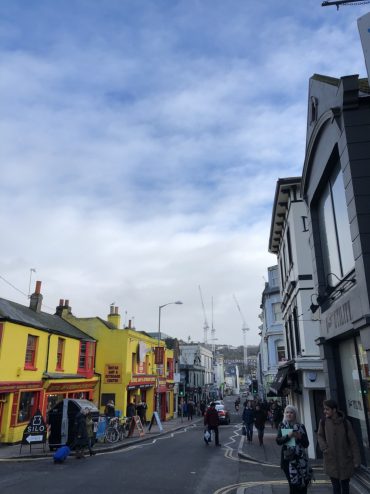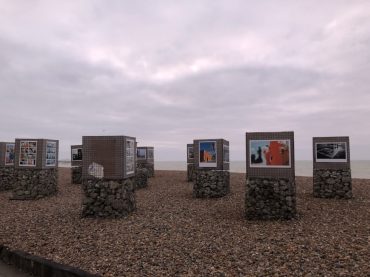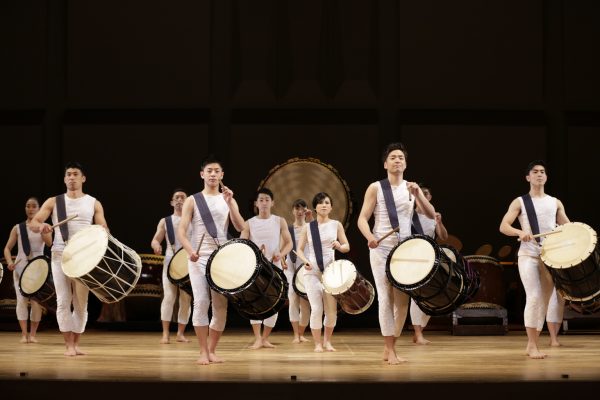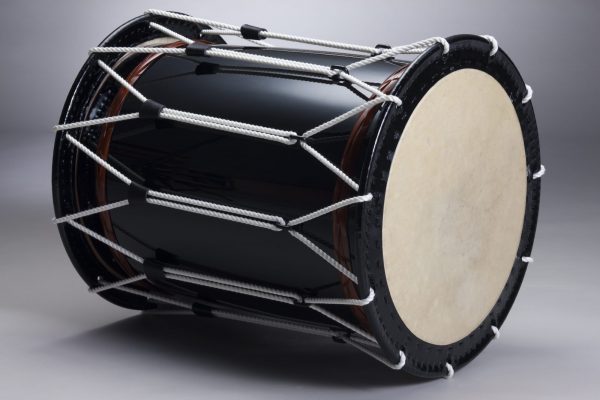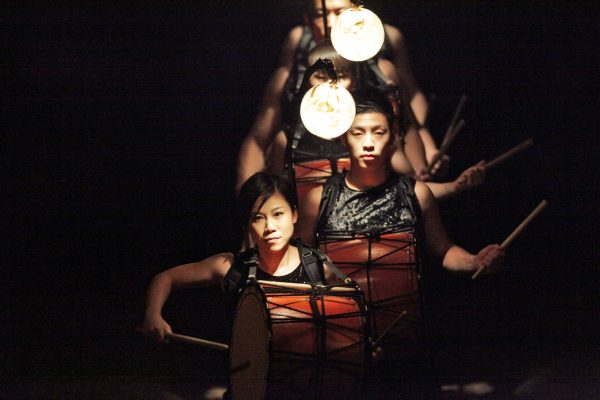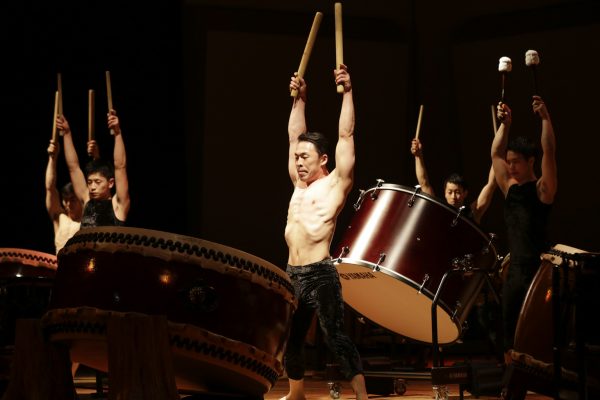“We’ve Arrived in Brighton!” by Eri Uchida
We have arrived in Brighton, UK, where we will give the first performance of “Kodo One Earth Tour 2018: Evolution”on our European tour.
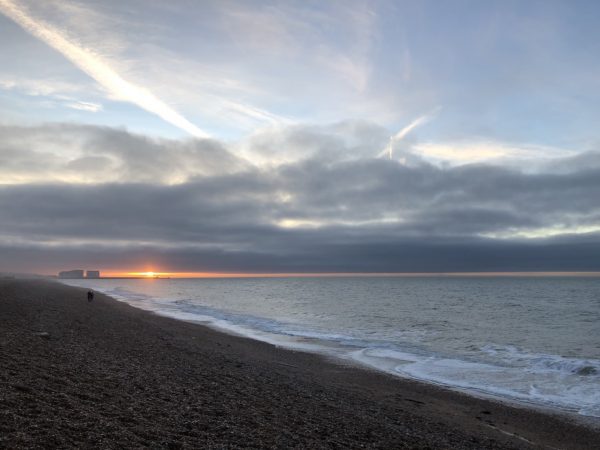
Brighton is a port town in the south-east of the UK. It looks out to sea just like Sado Island, but unlike the fierce winter on Sado, this town has a calm shoreline thanks to the warm currents of the Atlantic Ocean.
The shops in Brighton aren’t large chain stores. The streets are filled with unique restaurants, variety stores, clothing shops, and antique dealers. I even saw a bonsai shop!
 The shops have colorful pictures painted on their walls and the whole town has an artistic vibe. It was exciting just strolling around Brighton.
The shops have colorful pictures painted on their walls and the whole town has an artistic vibe. It was exciting just strolling around Brighton.
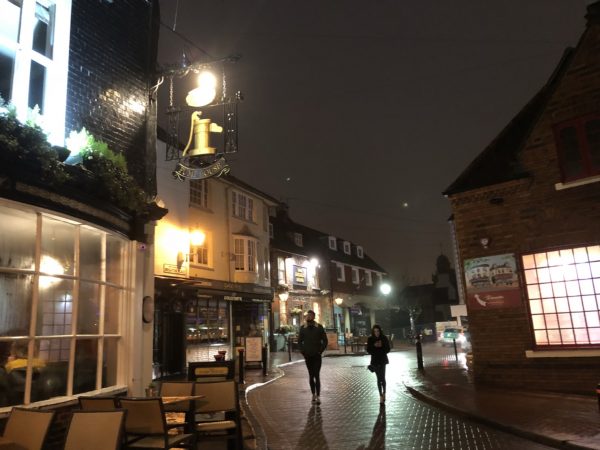 At night, the town is lit by warm street lamps, which are spaced out along the streets. The brick buildings make the town look so picturesque.
At night, the town is lit by warm street lamps, which are spaced out along the streets. The brick buildings make the town look so picturesque.
I saw a picture framer’s that had a sign reading:
“Let’s make this town full of artists.”
Perhaps it’s each person’s mindset that makes this town feel exciting to me.
I’ll looking forward to an exciting two-month tour!
“Kodo One Earth Tour 2018: Evolution” Europe Tour
https://www.kodo.or.jp/en/performance_en/performance_kodo_en/4522
Schedules
- Jan. 30 (Tue), 2018 Brighton Dome, Brighton, United Kingdom
- Feb. 2 (Fri), 2018 Manchester Bridgewater Hall, Manchester, United Kingdom
- Feb. 4 (Sun), 2018 Marlowe Theatre, Canterbury, United Kingdom
- Feb. 5 (Mon), 2018 Birmingham Symphony Hall, Birmingham, United Kingdom
- Feb. 7 (Wed), 2018 The Sage Newcastle, Gateshead, United Kingdom
- Feb. 11 (Sun), 2018 Wiener Konzerthaus, Vienna, Austria
- Feb. 13 (Tue), 2018 Concert Hall Aarhus, Aarhus, Denmark
- Feb. 15 (Thu), 2018 Royal Danish Academy of Music, Copenhagen, Denmark
- Feb. 18 (Sun), 2018 – Feb. 19 (Mon), 2018 Philharmonie, Munich, Germany
- Feb. 21 (Wed), 2018 Alte Oper, Frankfurt, Germany
- Feb. 22 (Thu), 2018 Meistersingerhalle, Nuremberg, Germany
- Feb. 24 (Sat), 2018 Kulturpalast Dresden, Dresden, Germany
- Feb. 26 (Mon), 2018 Philharmonie, Berlin, Germany
- Mar. 2 (Fri), 2018 Kuppelsaal, Hanover, Germany
- Mar. 4 (Sun), 2018 Liederhalle, Stuttgart, Germany
- Mar. 6 (Tue), 2018 Tonhalle, Dusseldorf, Germany
- Mar. 9 (Fri), 2018 Parco della Musica – Sala Santa Cecilia, Rome, Italy
- Mar. 11 (Sun), 2018 – Mar. 12 (Mon), 2018 Teatro Dal Verme, Milan, Italy
- Mar. 14 (Wed), 2018 Théâtre du Léman Geneve, Geneva, Switzerland
- Mar. 16 (Fri), 2018 Musical Theater Basel, Basel, Switzerland
- Mar. 17 (Sat), 2018 Samsung Hall Zurich, Zurich, Switzerland
- Mar. 18 (Sun), 2018 – Mar. 19 (Mon), 2018 KKL Lucerne, Lucerne, Switzerland
- Mar. 22 (Thu), 2018 Nordea Concert Hall, Tallinn, Estonia (Details TBA)
- Mar. 24 (Sat), 2018 – Mar. 25 (Sun), 2018 Savoy Theatre, Helsinki, Finland
- Mar. 29 (Thu), 2018 BKZ Oktyabrskiy Big Concert Hall, St. Petersburg, Russia (Details TBA)
- Mar. 31 (Sat), 2018 Crocus City Hall, Moscow, Russia (Details TBA)

